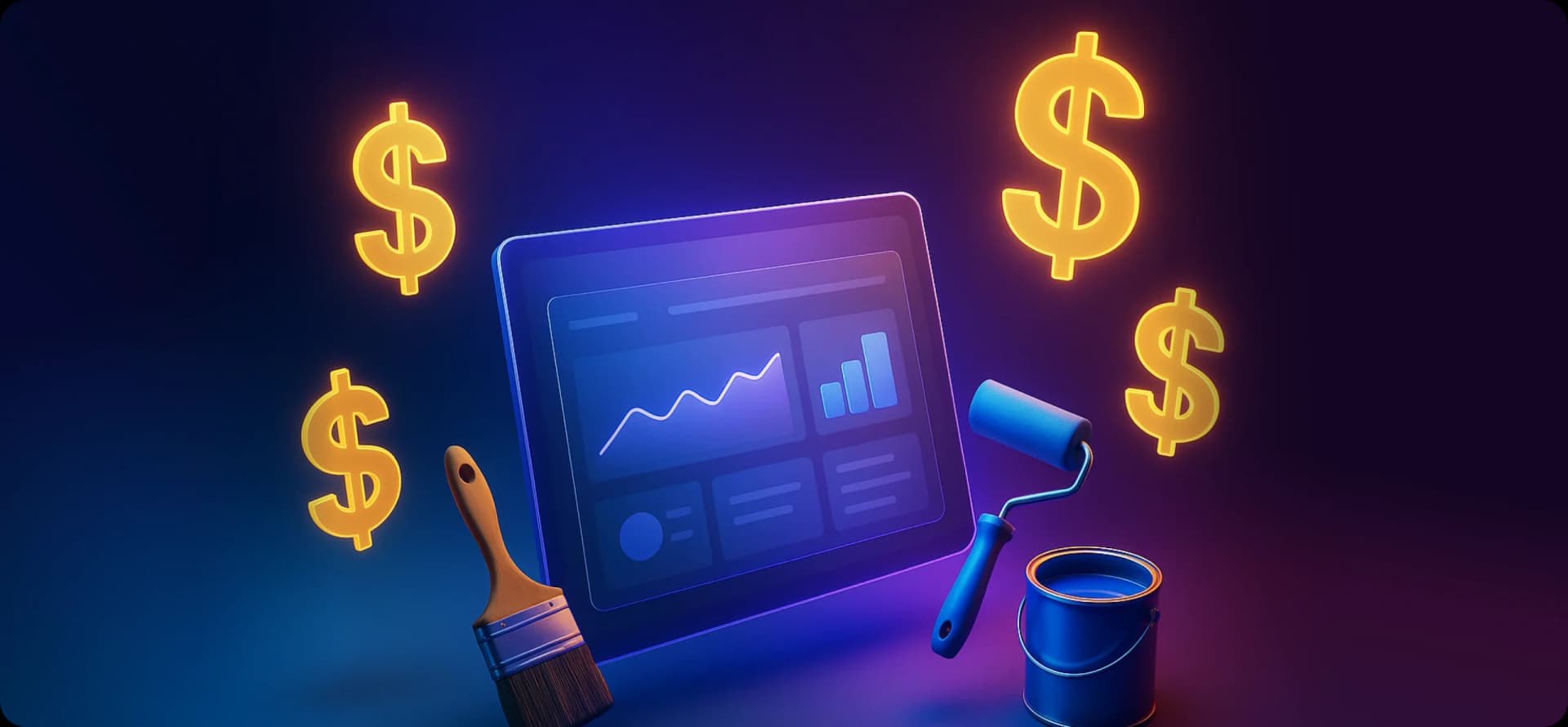Running a painting business with basic software is like painting a house with the wrong brush—you might finish, but it’ll cost you extra time and money.
Smart contractors know custom painting contractor software was a luxury; now it has become a necessity. The difference between struggling through chaotic days and running a streamlined, profitable operation.
FieldCamp stands out as the ideal solution for painting contractors, pairing powerful customization with ease of use. In this guide, we’ll use FieldCamp as our benchmark to show how customizable your software can revolutionize your workflow and boost your bottom line.
Visual learner? We hear your preferences. Check out the video below:
Understanding Customization Options
Built-in features vs. custom development
Most painting contractors face a tough choice: use basic software that doesn’t fit their needs or pay big money for custom development.
The best option sits right in the middle. Look for platforms with strong built-in customization. These let you:
- Build forms without coding
- Set up workflows with drag-and-drop tools
- Edit templates easily
- Change settings yourself
FieldCamp works this way. You can modify forms, adjust workflows, and personalize interfaces using simple tools that anyone in your office can handle.
To understand the capabilities of your software, check out the benefits of using the right painting contractor software.
Template changes and branding options
Your estimates and proposals should look professional, not generic. Good software lets you:
- Add your logo
- Change colors to match your brand
- Modify layouts
- Create a consistent look across all documents
This builds trust with customers and helps you charge higher prices.
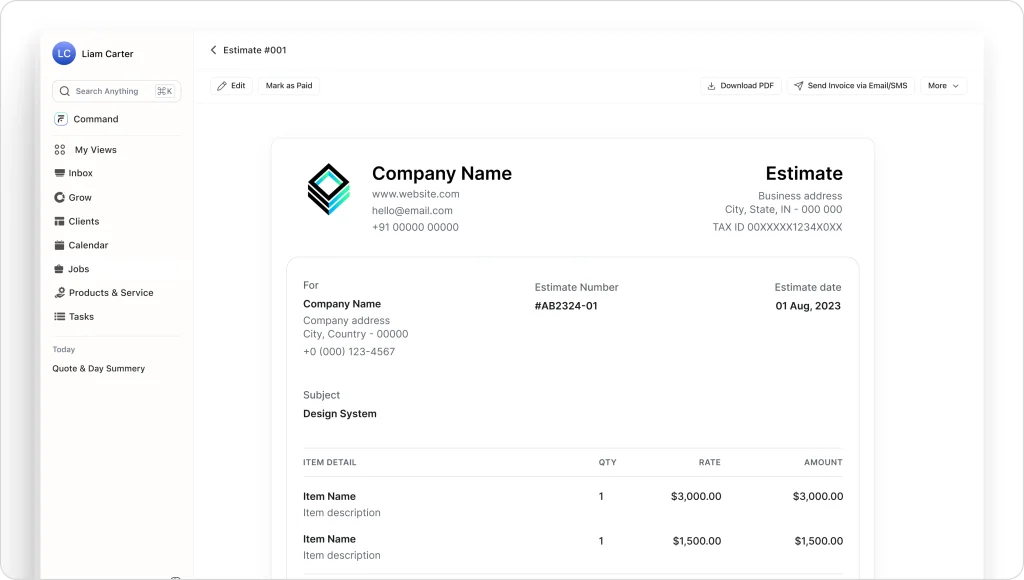
Custom fields and form setup
Every painting business tracks different details. Some focus on square footage. Others care more about surface prep details.
Custom fields let you capture what matters to your business:
- Primer types used
- Surface conditions found
- Client color choices
- Special requirements
Workflow automation and process changes
Generic workflows hurt your efficiency. Smart software adapts to how you work. Set up different processes for:
- Residential repaints vs. commercial jobs
- Interior vs. exterior projects
- Small touch-ups vs. full renovations
- Rush jobs vs. standard timelines
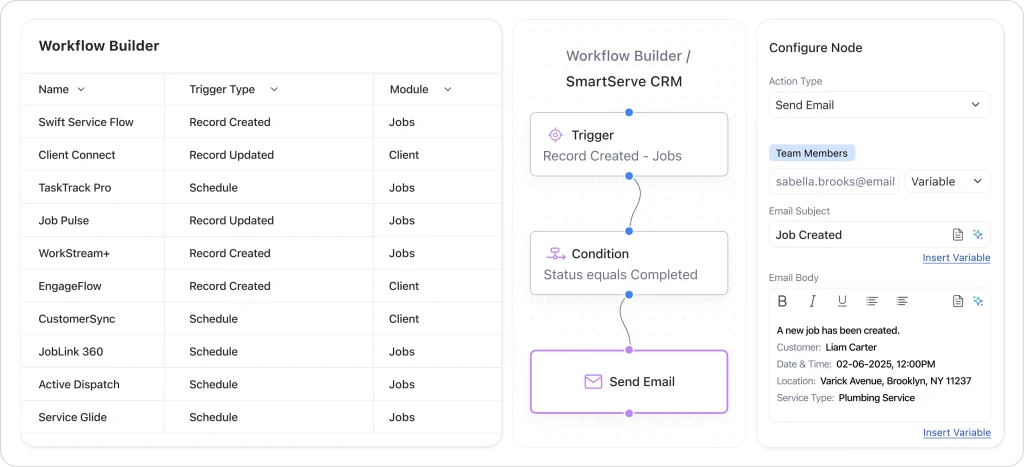
Wondering how this happens? Check out our guide on how painting contractor software works.
Business-Specific Customizations
Service type setup (Residential/Commercial)
Residential and commercial painting jobs work completely differently. Smart software lets you configure separate systems for each type.
Residential setup:
- Homeowner-friendly language
- Flexible scheduling
- Photo updates for progress
- Simple approval process
Commercial setup:
- Contractor terminology
- Strict timeline tracking
- Detailed documentation
- Multi-level approvals
Pricing structure and estimate templates
Accurate pricing makes the difference between profit and loss. Custom estimate templates handle different pricing models:
| Pricing method | Best for | Key features |
| Per Square Foot | Interior painting | Auto calculations, room measurements |
| Linear Foot | Trim and detail work | Precise measurements, material lists |
| Project-Based | Specialty finishes | Custom labor rates, unique materials |
| Hourly | Small repairs | Time tracking, progress billing |
With built-in calculators, modern estimate templates can automatically factor in surface prep, coat counts, and material specs. Integrated invoicing software ensures those calculations seamlessly flow into accurate billing.
Digital proposal branding and job status setup
Professional digital proposals close more deals at better prices. Custom proposal templates should include:
- Detailed scope descriptions
- Professional project photos
- Clear terms and conditions
- Your branding throughout
Custom job statuses keep everyone informed:
- “Surface Prep Complete”
- “First Coat Applied”
- “Final Walkthrough Scheduled”
- “Project Complete”
Customer communication settings
Some clients want daily updates. Others prefer weekly summaries. Custom communication settings handle different preferences:
Daily update clients:
- Morning start notifications
- Lunch break progress photos
- End-of-day completion status
Weekly summary clients:
- Monday project overview
- Wednesday progress check
- Friday completion forecast
Automated messages include project photos, timeline updates, and next steps tailored to each client’s style.
User Interface Customization
Dashboard layout and widget setup
Your project manager doesn’t need the same view as your estimator. Custom dashboards show relevant information first:
For crews:
- Today’s job locations
- Material pickup times
- Weather alerts
- Emergency contacts
For sales staff:
- Pending estimates
- Follow-up reminders
- Lead sources
- Conversion rates
For management:
- Profit margins
- Crew productivity
- Cash flow status
- Growth metrics
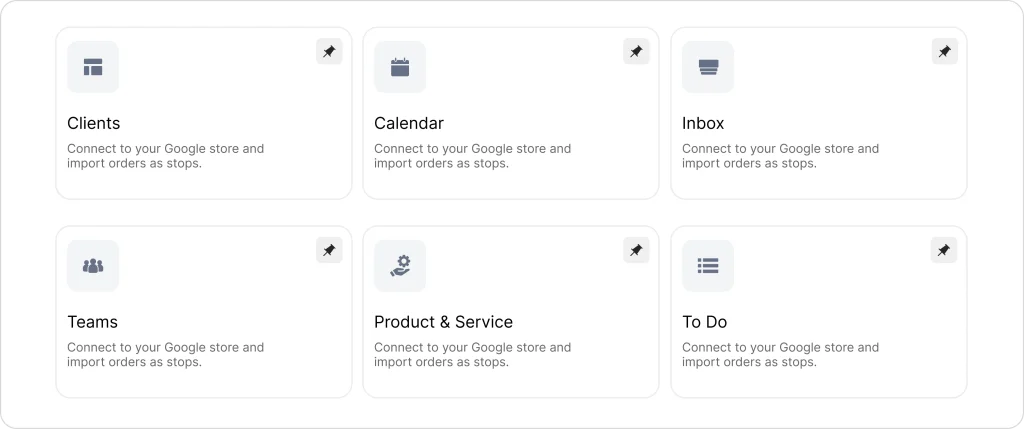
Role-based permissions and interface changes
Field crews need simple, mobile-friendly screens. Office staff need detailed views with full project history.
Field crew interface:
- Large buttons for touch screens
- Photo upload shortcuts
- Simple status updates
- Emergency contact access
Office staff interface:
- Detailed customer information
- Complete project history
- Financial tracking
- Scheduling tools
Role-based permissions ensure everyone sees what they need without extra complexity.
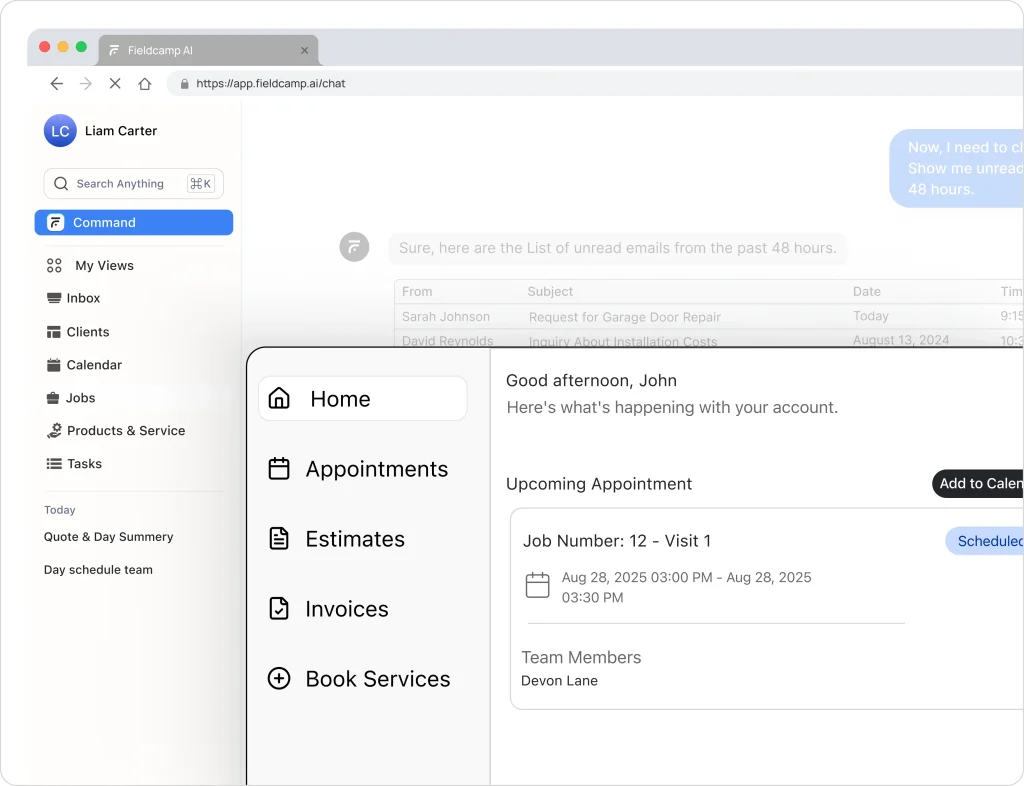
Mobile app customization
Painters work on ladders, not at desks. Mobile customization ensures field teams can complete tasks quickly:
- Update job status in two taps
- Upload progress photos instantly
- Request materials with voice notes
- Access safety information offline
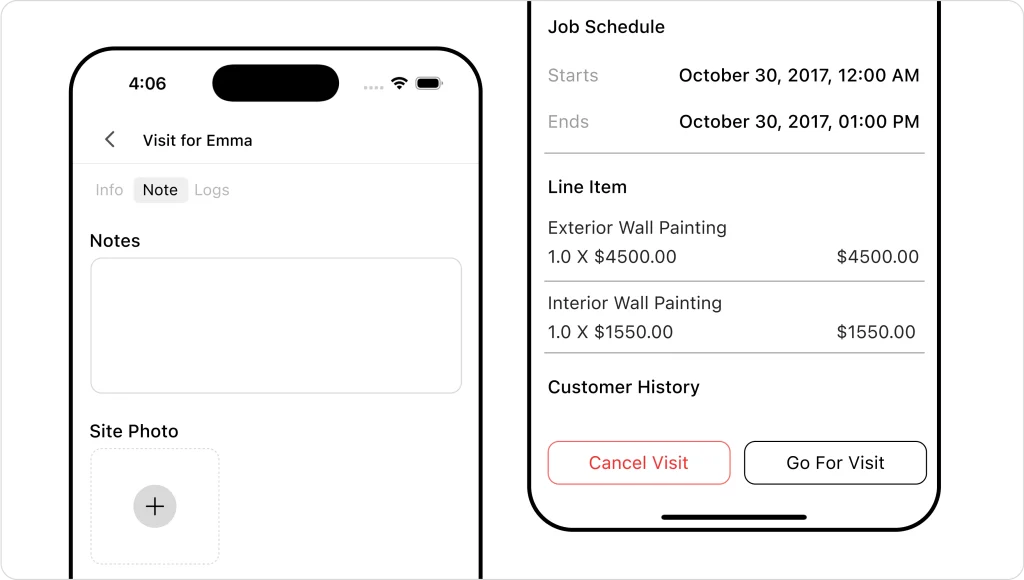
Looks super simple, right?
Check out how easy it is to adapt FieldCamp for your painting business.
Reporting and Analytics Customization
Custom report creation
Generic reports rarely answer your specific questions. Custom reporting lets you track what matters:
Crew performance reports:
- Jobs completed per day
- Quality scores by painter
- Material waste percentages
- Customer satisfaction ratings
Financial performance reports:
- Profit margins by job type
- Cost overruns and causes
- Payment collection times
- Seasonal revenue patterns
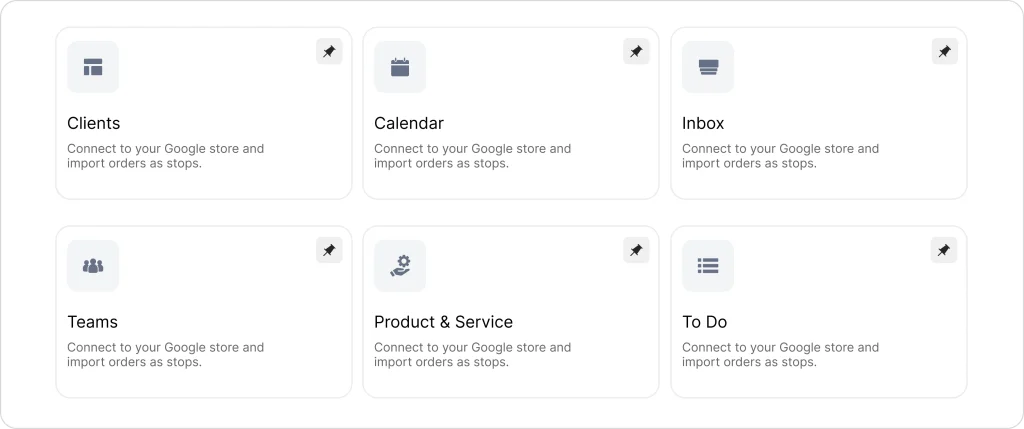
KPI dashboard setup
Different roles focus on different numbers:
| Role | Key metrics | Update frequency |
| Sales Manager | Conversion rates, pipeline value | Daily |
| Operations Manager | Project completion, material costs | Daily |
| Owner | Net profit, cash flow, growth rate | Weekly |
| Team Leaders | Quality scores, efficiency ratings | Weekly |
Automated report scheduling
Manual reports waste time and create gaps. Automated scheduling ensures stakeholders get regular updates:
- Daily: Crew productivity summaries
- Weekly: Project status reports
- Monthly: Financial performance reviews
- Quarterly: Business growth analysis
Data visualization options
Numbers tell stories, but charts tell them better. Custom visualization options help you:
- Spot trends quickly
- Identify problems early
- Celebrate successes
- Make data-driven decisions
Choose from bar charts, line graphs, heat maps, or pie charts based on what makes your data clearest.
Implementation Considerations
Cost and timeline planning
Smart customization investments pay for themselves quickly. Here’s what to expect:
Basic customizations (1-2 weeks):
- Form modifications
- Logo and branding
- Simple workflow changes
- Basic reporting setup
Advanced customizations (1-2 months):
- Complex workflow automation
- Advanced reporting systems
- Integration with other tools
- Role-based permission setup
Most painting contractors see positive returns within 6-12 months when focusing on high-impact areas like estimating accuracy and scheduling efficiency.
Maintenance and updates
Customizations need ongoing attention. Software updates might affect custom fields or workflows.
Best practices:
- Choose platforms that maintain customizations through updates
- Review settings after major software updates
- Document all custom configurations
- Plan for periodic training refreshers
Training for custom features
The best customizations are worthless if your team doesn’t use them. Factor training time into your timeline:
Week 1: Basic feature training for all users
Week 2: Role-specific advanced training
Week 3: Troubleshooting and optimization
Ongoing: Monthly check-ins and refreshers
Remember: the goal isn’t having the most customized software. It’s having the most profitable painting business. When your software works the way you work, everything else falls into place – happier customers, more efficient crews, and significantly better profits.
Conclusion
The painting industry is evolving fast, and contractors who leverage customizable software like FieldCamp are dominating their markets. This isn’t just about efficiency anymore – it’s about creating a sustainable competitive advantage that drives real profit growth.
Your competitors are still struggling with generic tools that don’t fit their business. Meanwhile, you can optimize every aspect of your operation with software that adapts to your proven processes.
Customers notice when a painting contractor operates professionally with real-time updates, accurate estimates, and smooth project execution. This professional image justifies premium pricing and generates more referrals.
The question isn’t whether you can afford to invest in customizable painting contractor software. The real question is whether you can afford not to, especially when solutions like FieldCamp make customization accessible and profitable for businesses of all sizes.
Your Business, Your Rules, Your Software
FieldCamp customizes to how you schedule and complete painting jobs. No forcing your process into someone else’s system.
Frequently Asked Questions
Will customizing my painting software affect existing data and projects?
No, customizing your painting software won’t delete or damage existing data. Platforms like FieldCamp preserve all current projects, customer information, and historical data during customization. New custom fields and workflows apply to future projects, while existing jobs continue unchanged. Most platforms allow you to gradually migrate old projects to new workflows when convenient.
Can I customize painting software without technical knowledge?
Yes, modern platforms like FieldCamp use drag-and-drop builders and simple menus. You can customize forms, workflows, and templates without needing to code. Step-by-step guides and customer support help with setup.
What are the most important customizations for painting contractors?
Priority customizations include: custom estimate templates with your branding, job workflow automation matching your painting process, custom fields for surface types and paint specs, automated customer updates, and mobile forms for field crews.
How long does it take to implement custom features in painting software?
Basic customizations take 1-3 days. Moderate features like automated workflows need 1-2 weeks. Complex integrations require 4-8 weeks. Team training typically takes 1-2 weeks, with full adoption in 30 days.
